When astrophysicist, cosmologist, and author Neil deGrasse Tyson undertook hosting a new version of Carl Sagan’s legendary 1980 space-oriented series Cosmos, he knew he would have to bring his approach into the 21st century. “Given what we know of the laws of physics, what kinds of worlds are possible?” said Tyson about the intent of new 13-episode Nat Geo show, Cosmos: Possible Worlds. “Where will our future take us? It’s very personal in a sense that everybody will feel as though their thoughts and decisions matter in making a better world. I’m called to the show — I do it because I have to.”
Brought aboard the series to handle the post-production sound was the firm King Soundworks, owned and operated by supervising sound editor Gregory King. “The trick for us is this is reality,” King explained. “All of the visuals that you see—whether it’s in a quantum level on earth or a macro level in the cosmos—it all exists. We didn’t want something artificial sounding; it should be natural. We wanted it to sound real with a very organic feel. That was a real challenge.”
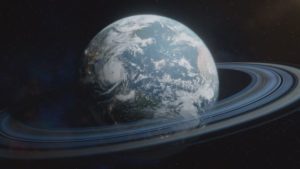
In creating sounds which were unique yet plausible in the natural world, King knew he was in uncharted territory, as with the soundscape of the original 1977 Star Wars film, for which renowned sound designer Ben Burtt devised unprecedented sound effects. “Besides coming up with the sounds,” King said of his current series, “we had to make them very believable and real, and not reference other things. You have to stay within a certain amount of convention.”
Additionally, sound designer Jonathan Greasley noted how audiences’ ears would be taken to previously unheard places in Cosmos: Possible Worlds. “The one thread through all of it is that nobody’s actually heard what these things sound like,” he discussed of sounds from 14 billion years ago up to 14 billion years into the future. “It’s either too long ago or infinitesimally small. They are interpretations of what these real things might sound like.”
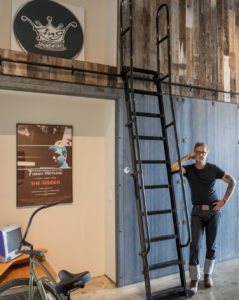
From his previous firm, Sounddogs, King amassed the largest internet-published sound library in the world. “We continue to build on it,” King said of Sounddogs’ archives. “That was a resource—and creating new sounds. Living things in life have a rhythm to them, a tonality to the ear. We started to incorporate musical instruments in a non-musical way. We recorded elemental sounds that we can then merge and mix with other sounds to create a rhythmic pattern. It’s part of the living breathing element which makes the sounds feel alive.”
Expanding on the implementation of musical instruments for Cosmos: Possible Worlds, Greasley revealed that every sound technician at King Soundworks is a trained musician. “We can start an Arcade Fire-style band,” Greasley joked. “Some of the elements we started off with, we could manipulate the dynamic we saw on the screen. Sometimes, we needed a steady bass sound to follow the action; there’s a lot of guitar, bass, and cymbals. Actual acoustic vibrational things in nature — strings, metal, wood — to create a black hole spinning around.”
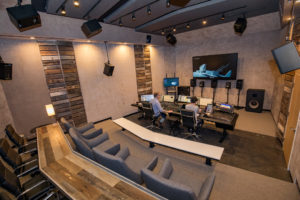
Considering that world-class composer Alan Silvestri wrote the score for the series, King added that King Soundworks aspired to create their sound effects without being dissonant with regards to Silvestri’s music. “We would send Alan and his team rough sound design concepts early on,” King detailed about the seven months his team spent on the run of episodes. “We were trying to keep it very organic. He did do a traditional, large, symphonic, orchestral score. We would trade off all of the time: ‘music is hitting that moment beautifully—let’s pull back on the sound design.’ Or with Neil deGrasse Tyson’s voiceover; we always did the mixing choices in service of how to tell the story.”
During the post-production period, neither King’s group nor Silvestri had a chance to see the myriad visual effects required to create outer space elements and earthbound minutiae. Instead, the sound team was sent storyboards and animatics of the show’s intricately planned images. “Neil’s supposed to be walking on the surface of a prehistoric planet, and he’s walking in a green room,” King confessed of sent visual materials. “It wasn’t until the end where we started to get different stages of VFX and fine tune the sound. The foundation was laid, but all of the real meat and potatoes was right until the deadlines.”
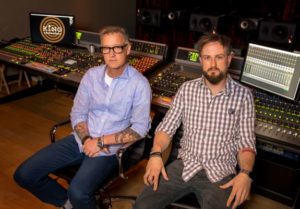
During the picture editorial stage of the show, King Soundworks delivered sound design elements to the editing room to set a template for editors’ cuts of various episodes, such as a sequence where Tyson goes into an old cave. “You hear the acoustics design for the echo,” Greasley stated of the cave, noting that he also needed to treat Tyson’s voice. “From that to seeing the episode on the mix stage, we are talking three-four months. Me and Greg are the first people to see what [an episode] actually looks like. When we actually receive the locked cut and prep it for the mix stage is only about a week. It’s all hands on deck.”
During the re-recording mixing phase, Cosmos: Possible Worlds was mixed at King Soundworks’ stages in Van Nuys and at Seth MacFarlane’s offices in Beverly Hills. “The biggest challenge was tying everything together,” King conveyed. “Things weren’t individual events happening—we are all interconnected: an atomic level, up to the entire universe. We tried to create this thread. [For example], when moons are getting tugged and pulled, we have to make it sound really cool but not be foreign from other episodes. We are all a big giant network, and the sounds are all related. That was a lot of fun and a huge challenge.”
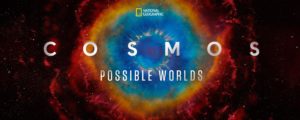
For more information, link to: https://www.nationalgeographic.com/tv/shows/cosmos-possible-worlds





